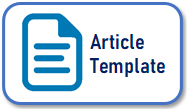Komunitas Anura (Amphibia) pada Tiga Tipe Habitat Perairan di Kawasan Hutan Harapan Jambi
Abstract
A study on Anuran’s community (Amphibia) living in three types of wetland habitats ( i.e: rivers, lakes, and swamp forest) at Harapan Rainforest Jambi was conducted from October 2011 to January 2012 by using Encounter Visual Survey along six belt transects. This study found 115 individuals of Anura’s, which belong to 14 species, eight genera, and three families. Density of each species was different between the three wetland habitats. The highest density in the rivers was Limnonectes paramacrodon (6.66 ind/ha), in the lakes was Occydozyga sumatrana (16.87 ind/ha), and in the swamp forest was Limnonectes paramacrodon (5 ind/ha). Diversity index of Shannon Wiener indicated that species diversity was different between lakes, rivers, and swamp forest (rivers: 1.227, lakes: 1.594, and swamp forest: 1.154). The highest similarity index was found between rivers and lakes (42.86%), and the lowest between swamp forest and lakes (16.67%). Distribution patterns of most Anuran’s species based on Quadrat Variance Analysis were clumped.
Keywords: anura, community structure, distribution pattern, wetland habitat
Full Text:
PDFReferences
Berry, P.Y. 1975. The Amphibian Fauna of Malay Peninsular. Tropical Press. Kuala Lumpur.
Birdlife. 2008. Restorasi Ekosistem Harapan Rainforest. Birdlife International.
Chapman, R. N. 1931. Animal Ecology. Mc. Graw-Hill Book Company. New York.
Dwidjoseputro, D. 1994. Ekologi Manusia dan Lingkungannya. Erlangga. Jakarta
Halliday, T. and K. Adler 1986. The Encyclopedia of Reptiles and Amphibians. Andromeda Oxford Ltd. England.
Imansyah, M. J. 2010. Keanekargaman Hayati Harapan Rainforest 2009: Keanekaragaman Jenis Amphibia dan Reptil di Kawasan Harapan Rainforest. http://www.birdlife.org/datazone/species/index.html?action=SpcHTMDetails.asp&sid=1526&m=0. 25 September 2011
Inger, R. F. and Stuebing. 1997. A Field Guide to the Frog of Borneo. Science and Technology Unit. Sabah.
Iskandar, D. T. and E. Colijn. 2000. Preliminary Checklist of Southeast asian and New Guinea Herpetofauna. Treubia. 31(3): 1-33.
Iskandar, D. T. 1998. Amfibi Jawa dan Bali; Seri Panduan Lapangan. Puslitbang Biologi Lembaga Ilmu Penelitian Indonesia. Bogor.
IUCN. 2012. Global Amphibian Assesment. www.globalamphibianassesment.com. 4 Juli 2012 .
Kendeigh, S. C. 1980. Ecology with Special Reference to Animal and Men. Prentice Hall of India Private limited. New Delhi
Kurniati, H. 1998. Kebiasaan Makan Empat Jenis Katak Rana Asal Kelila, Kab. Jayawijaya, Irian Jaya. Biota. 3(2): 58-62
Ludwig, J. A. and J. F. Reynolds. 1998. Statistical Ecology a Primer on Methods and Computing. John Wiley and Sons. Canada.
Magurran, A. E. 1988. Ecological Diversity and Its Measurement. Princeton University Press. Princeton. New Jersey.
Michael, P. 1994. Metoda Ekologi untuk Penyelidikan Ladang dan Laboratorium. Universitas Indonesia Press. Jakarta
Mistar. 2003. Panduan Lapangan Amfibi Kawasan Ekosistem Leuser. PILI- NGO Movement. Bogor.
Odum, P. E. 1971. Fundamental of Ecology. W. B. Sounder Co. Ltd. New York
Suin, N. M. 1998. Ekologi Hewan Tanah. Bumi Aksara. Jakarta.
Suin, N. M. 2002. Metoda Ekologi. Universitas Andalas Press. Padang.
Sulasta, D. J. 2008. Komunitas Anura (Amphibia) Sungai dan Hutan di HPPB Universitas Andalas. Skripsi Sarjana Biologi Universitas Andalas. Padang.
Van Kampen, P.N. 1923. The Amphibia of the Indo-Australian Archipelago. E.J Brill, Ltd. Leiden.
Refbacks
- There are currently no refbacks.




